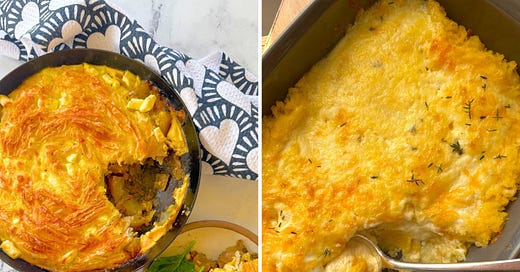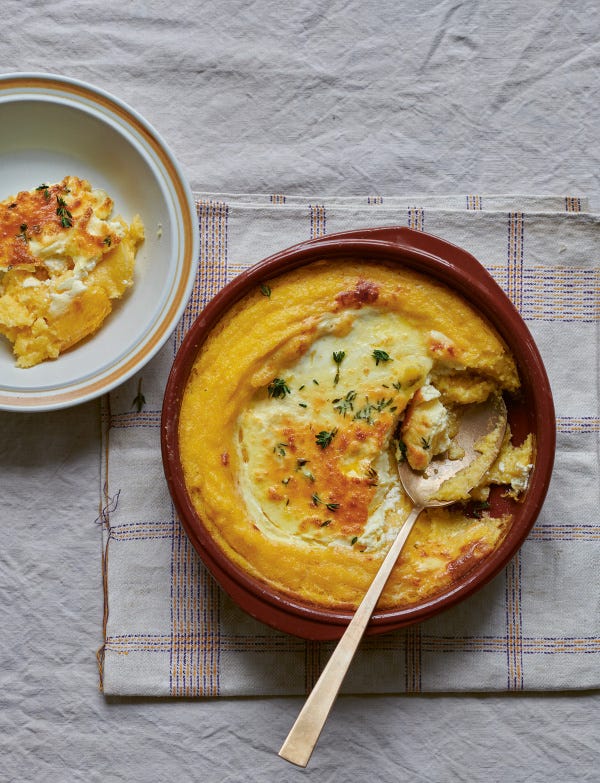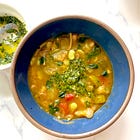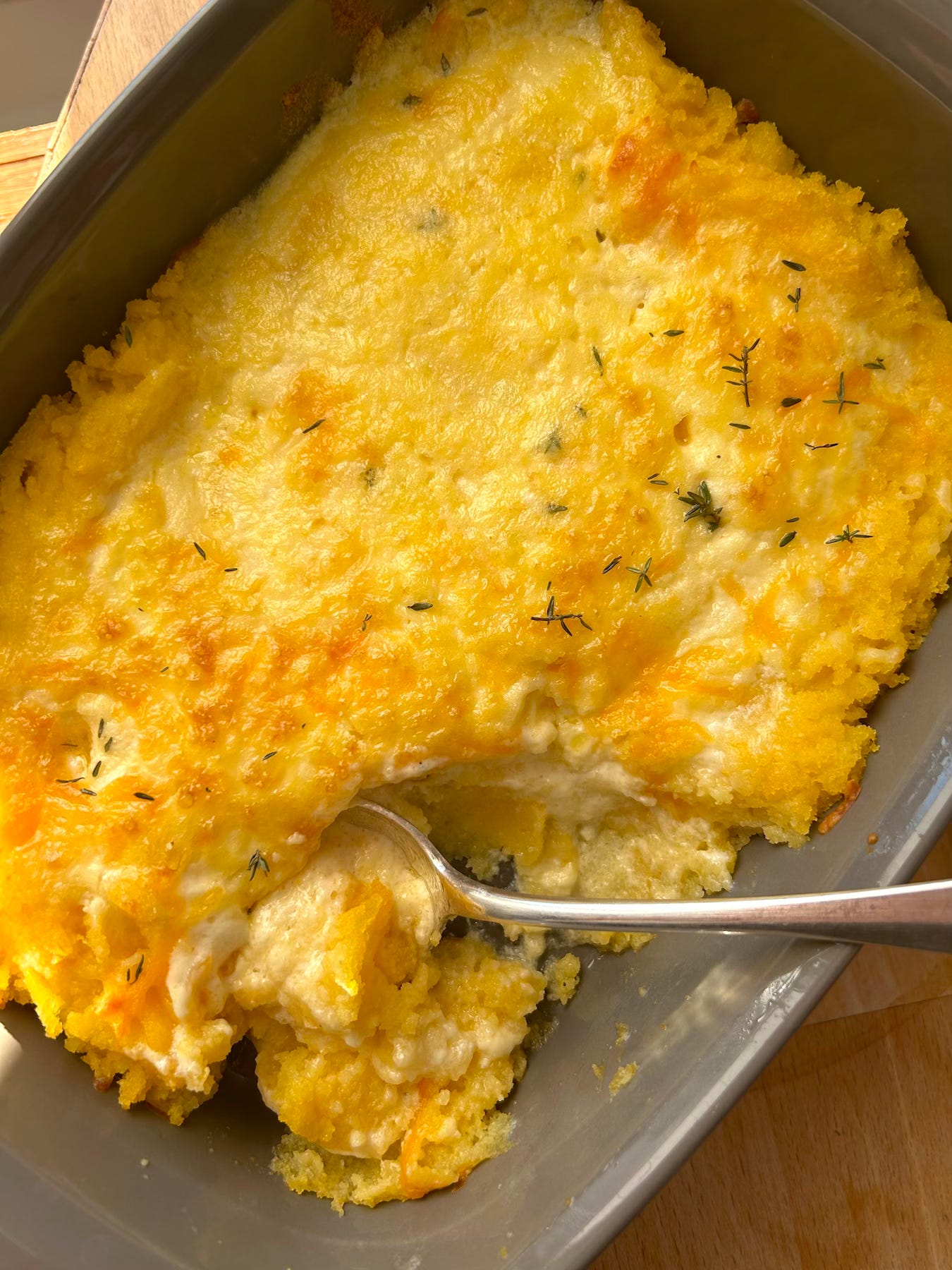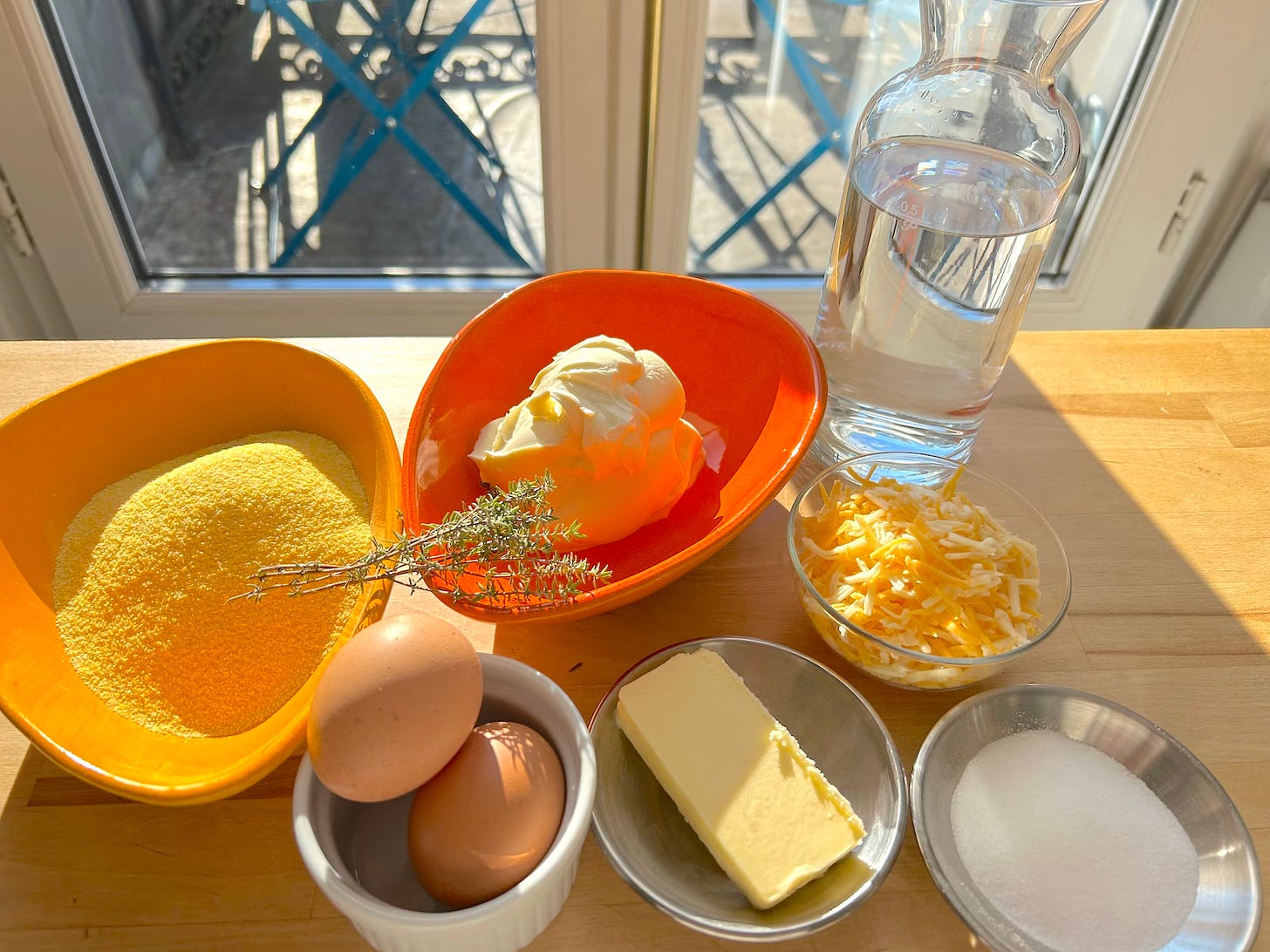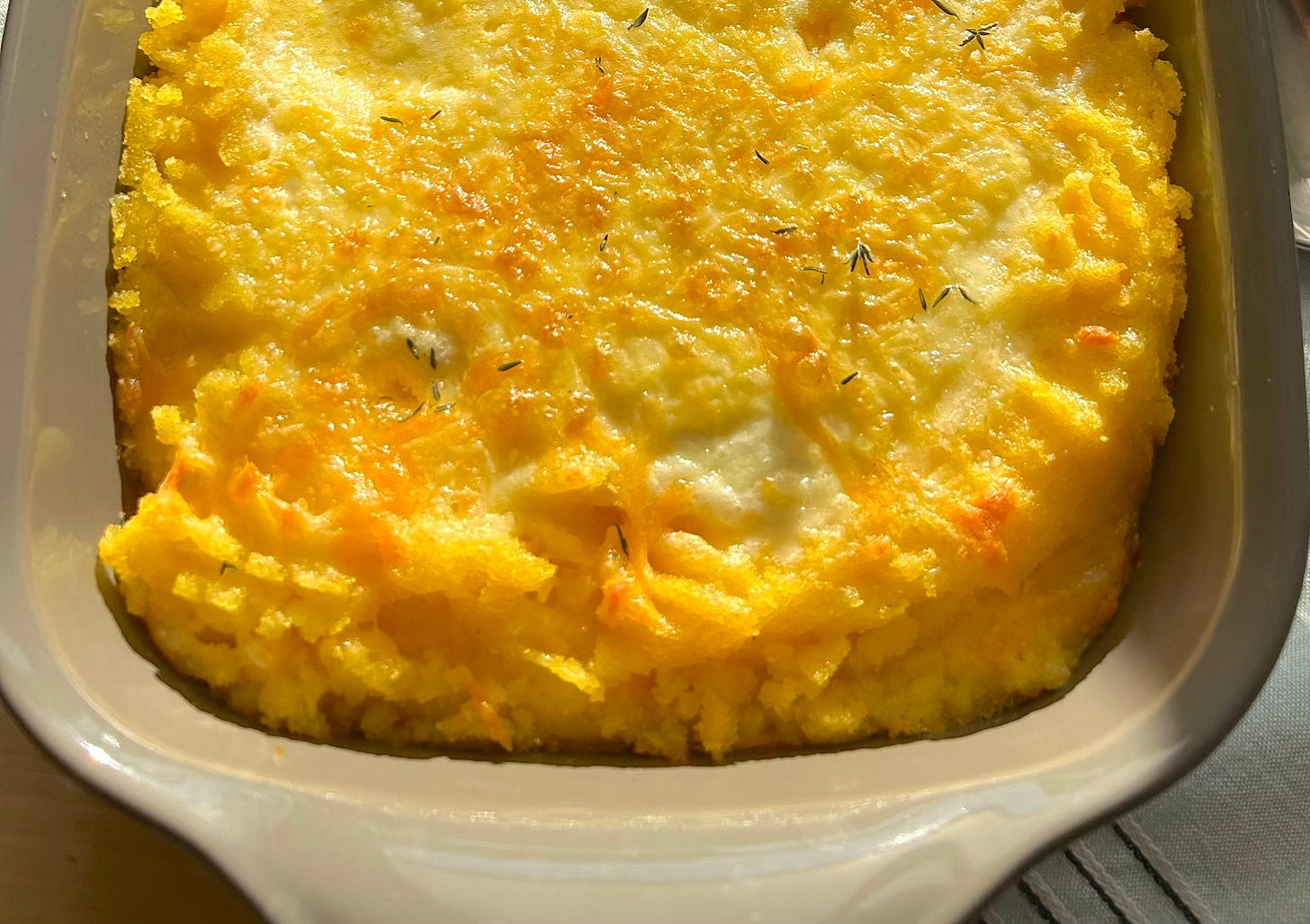2 recipes for the 'comfort + joy' folder to share with friends
Plus, a big and exciting update on my new book
Bonjour! Bonjour!
It's Friendship Food time, the time of month when I send you a recipe that I think is good for sharing with friends. I know, I know, most foods are good for sharing and almost any food tastes better when we’ve got friends around us. But I love calling this out regularly and choosing recipes that I think will make you happy — today, I’ve got two. I also loved that, in addition to these monthly recipes, I make a monthly donation in your name — you wonderful readers who support this newsletter. With the fires in Los Angeles an ongoing tragedy, I am once again sending money to World Central Kitchen — they’ve been on the ground from the start, setting up emergency kitchens and feeding thousands of people each day, just as they do when disaster strikes anywhere in the world. Thank you, thank you and thank you again for helping me to do this.
My new book — the game’s afoot
Remember I told you that I was working on a new book? Remember that I told you that it would be called Kitchen Cakes … but that maybe it wouldn’t? Well, it won’t. As of just days ago, my next book has a new title, and I love it: DORIE’S ANYTIME CAKES. I can’t explain it, but I love the word “anytime” — it sounds playful to me. Also expansive — I think “anytime” signals possibilities and opportunities. And when it comes to cake, you can never have too many possibilities or opportunities to bake and share. And so #teamcake, we’ve got a new name.
And we’ve got a publication date: October 21, 2025 — ANYTIME CAKES will be a Libra, like Michael.
And we’ve got a pre-order date: TODAY! Pre-orders (you’ll be hearing too much about this from me — apologies in advance) start today, exactly 9 months before the book is out. If you want to be the first on your block to pre-order the book, you can do it here or here or here.
What we’re missing is a cover. Coming soon.
Although, I got permission from the publisher to give the xoxoDorie Founding Friends a sneak peek at the drafts that might become the cover during our Zoom meet-ups last week. I loved seeing everyone, loved having time to chat — no surprise that they’re a wonderful group. 💟 Thank you Founding Friends for providing extra support to the newsletter. 💟
Just to tide us over, here are a couple of illustrations from ANYTIME CAKES. They’re by the phenomenally talented Nancy Pappas. I can’t wait for you to see all of them. I’m crazy about them!
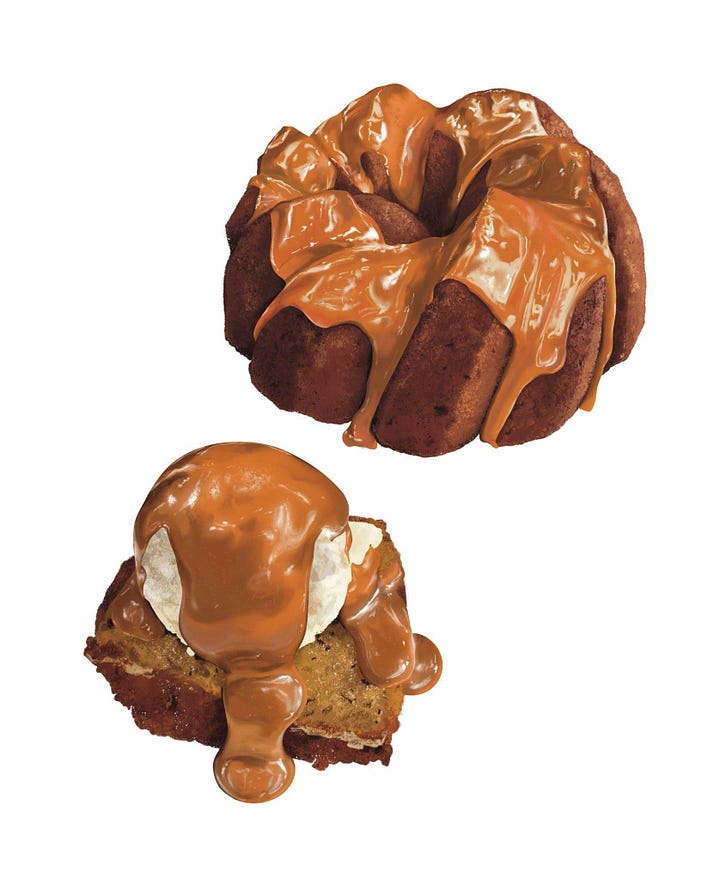
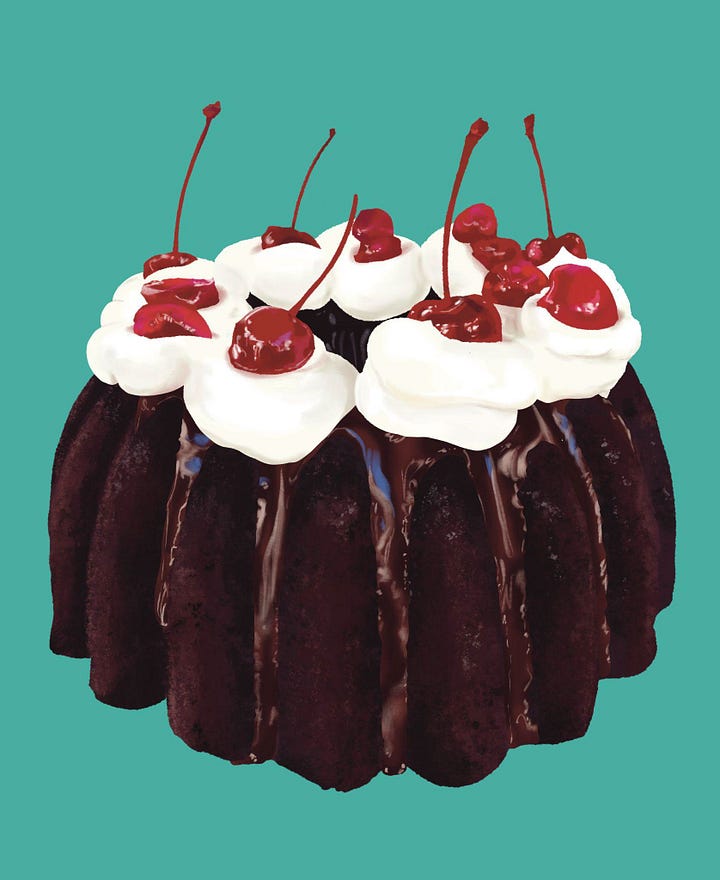
As we chug along to pub date, I’ll tell you more about the book and how it got made. But today is all about cornmeal and potatoes from Irina Georgescu’s new book that I love, Danube: Recipes and Stories from Eastern Europe.
Danube — a cookbook with deep roots
I came to Danube already a Georgescu fan: I had (and continue to have) a crush on her last book, Tava: Eastern European Baking and Desserts from Romania and Beyond. Irina is a beautiful writer and even before you make anything from her books, there’s the pleasure of reading her, of being her companion as she returns to her homeland, to the countries she knows well and to the cooks she loves. If you don’t know the food of this part of the world, you can’t do better than to learn about it from Irina.
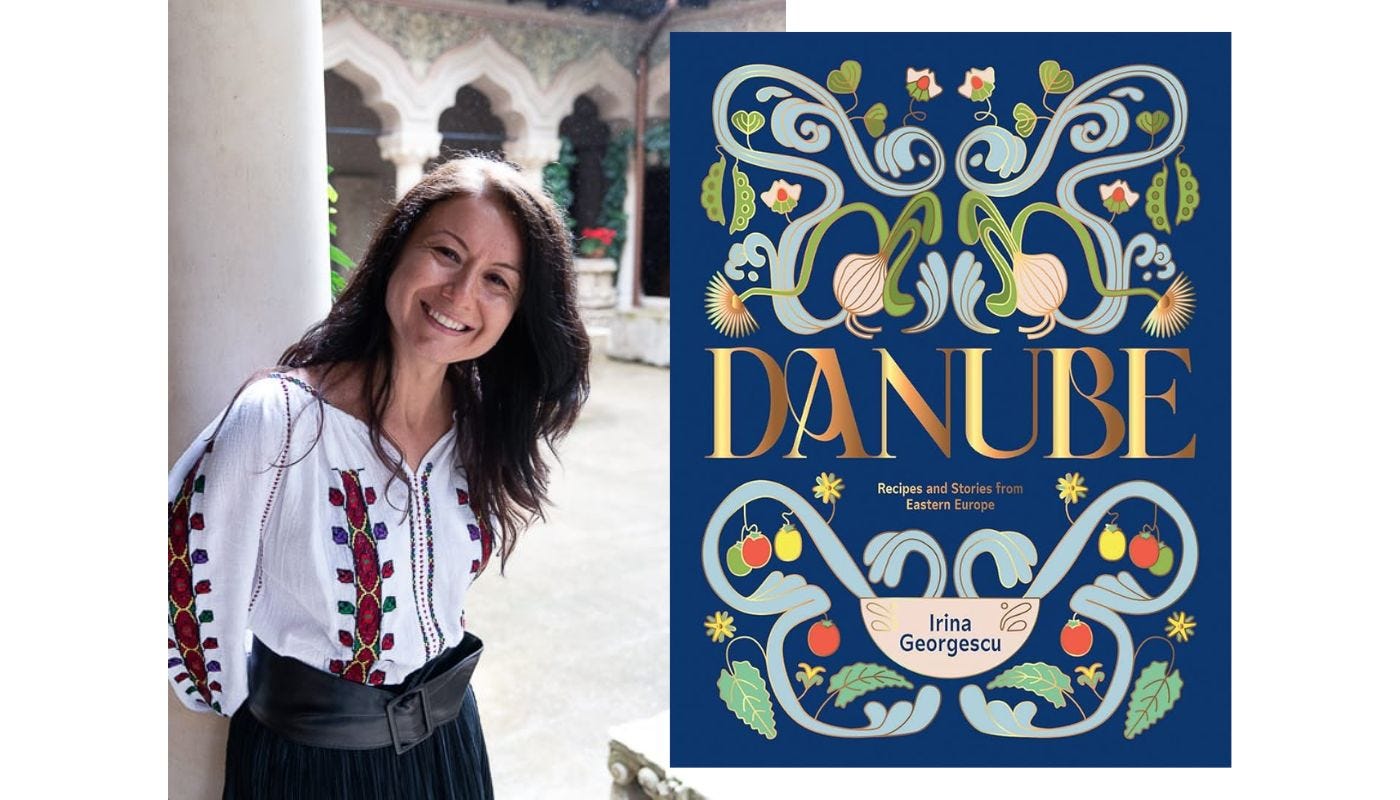
Mǎmǎligǎ — a recipe from my childhood
Speaking of the food of the Danube, Irina says: “It’s a diverse cuisine, whose main ingredient is generosity.” As I paged through the book, I found myself craving the soups and the flatbreads, the noodles and stews, the beans and grains that fill out some dishes and stand alone in others, the cornmeal. Especially the cornmeal. When Irina wrote, “If there is no cornmeal, there is no meal,” and when she led us to the first recipe in the book, the “mother recipe” for mǎmǎligǎ, polenta, she unlocked a little corner of my childhood.
When I was growing up, we ate promptly at 6 pm and we ate as a family. We all ate the same food, except for my father: He always had an extra dish alongside whatever was the main course. I knew it was called mǎmǎligǎ and I knew it was a kind of cornmeal mush, which for sure didn’t sound as appetizing to me then as it does now. In those days — I think the mǎmǎligǎ days lasted until I was perhaps ten — I was so incurious that I never asked about it, never wondered about it, never tasted it. I couldn’t understand why he had it every night and I never asked. Yet, when I saw the recipe and read Irina’s paean to cornmeal, I had a tingle of recognition. Here was the food that bound my father to his family. And when I made her Mǎmǎligǎ la Cuptor / Baked Cornmeal with Sour Cream, Cheese and Eggs, I was sorry that I’d missed out sharing my father’s very plain cornmeal with him; sorrier that he couldn’t taste this version with me: it is so much more luxurious than anything he had! But even without memories, I know I’d have found Irina’s version profoundly satisfying.
Scroll down for the recipe (available for all subscribers) and my confession: I had to use a different size pan than Irina recommended and I had to mix it a little differently, but none of that mattered: what I made was so inviting and so delicious that it will be tucked into my Comfort and Joy folder. I will also make it again and again and share it with friends. Just as I hope you will.
ALSO — a recipe for something beautiful: potatoes crowned with filo
When I read Danube for the first time, I was stopped mid-turn by Irina’s recipe for a gorgeous skillet dish: Pǎturatǎ pe Crumpi / Potato Stew with Cheese Filo Crust. Just looking at the picture, I could almost taste the dish. Of course it was the filo that stopped me. Crumpi is the word for potatoes and pǎturatǎ is the word for blanket. Here, the crumpi are topped with a beautiful blanket, a pǎturatǎ of filo. Even the description is cozy! Irina explains that this was once a dish of poverty, but that it evolved with the wealth of families who were making it into a cheese-filled strudel. Irina’s dish is a rendition that can be made at home. Preparing it is a “little fiddly at first,” she says, but look at what you get!
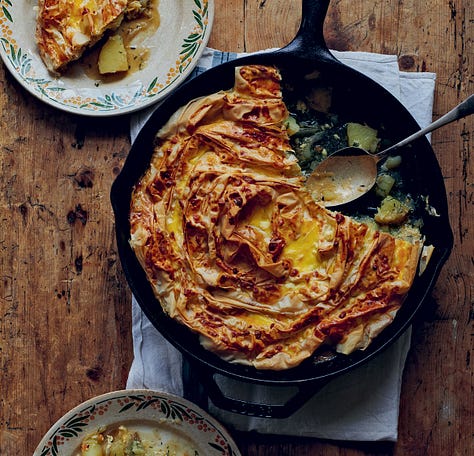
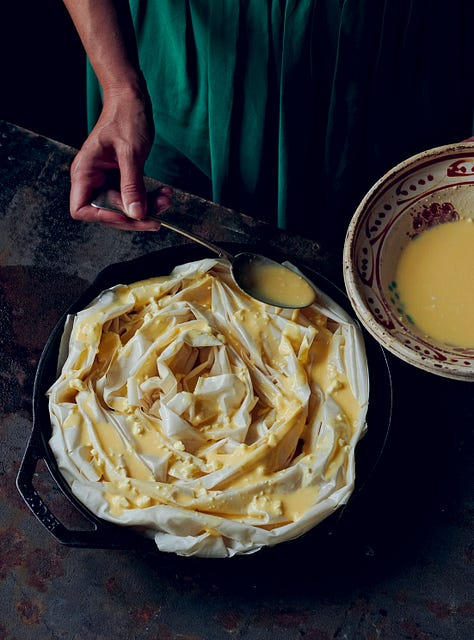
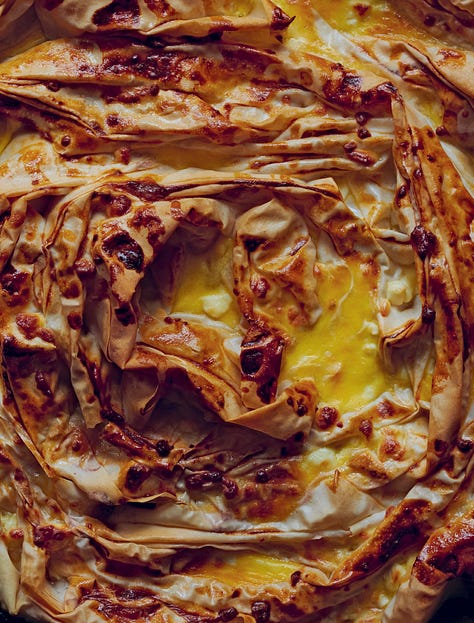
And if you love filo, don’t forget Ben Tish’s Filo and Coconut Custard from his book, Mediterra. The recipe’s here.
But First, A Little Paris Escape


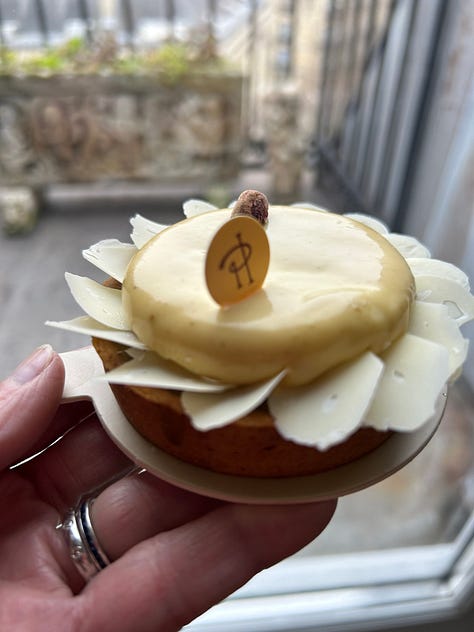
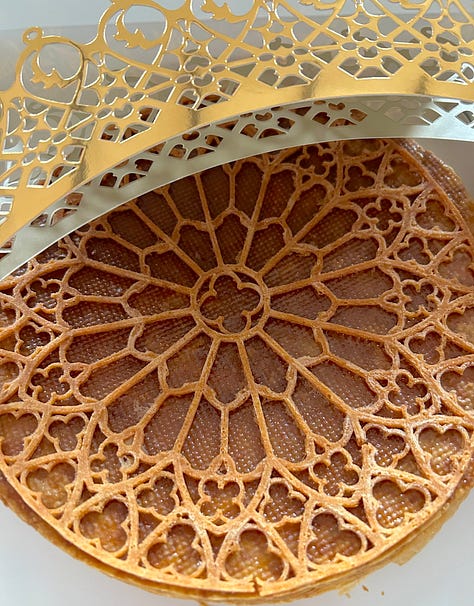

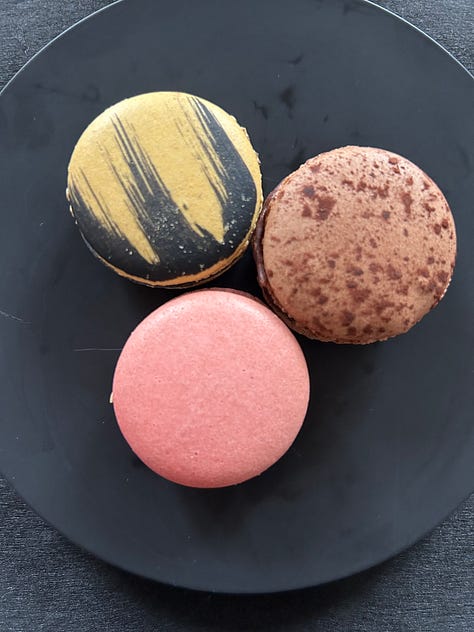
Cook, bake, share it all with friends. Thanks for being here — I’ll see you next week.
xoxoDorie is a reader-supported newsletter. Upgrade or invite more friends to join #TEAMCAKE! Click here to manage your subscription.
💬 Send us a message request via Substack chat if you need help with your membership.
👋 Say hello and share what you're making on Facebook and Instagram.
📚 You can find more recipes in my latest book Baking with Dorie, and get ready for Anytime Cakes by pre-ordering starting today at Amazon or Barnes & Noble or Bookshop.org.
MǍMǍLIGǍ LA CUPTOR
Baked Cornmeal with Sour Cream, Cheese and Eggs
Adapted from Danube: Recipes and Stories from Eastern Europe by Irina Georgescu | Get at Bookshop.org, Barnes & Noble or Amazon
Here’s what Irina says:
This dish will bring comfort and a sunny mood to your morning. It is nicknamed ‘shut up and eat’ because it’s best eaten hot. It is often made with a whole, cracked egg on top, but I prefer to use beaten eggs for the extra-smooth texture.
Here’s what I say: It’s soooooooo good. And while Irina suggests this dish for breakfast, I made it for dinner and served it with a salad. It was frigid outdoors, but around the table it was warm. Blissful, really.
GOOD TO KNOW BEFORE YOU START
My confession: I made this in Paris, where I had the right polenta for the dish, but I had the wrong size baking pan; it was fine. I had the wrong shape for the pan; it was fine. I made a wonky well; it was fine. I couldn’t get sour cream so I used crème fraiche; it was fine. It was even fine when, having set the oven to the wrong temperature — don’t ask — I pulled it out and the eggs and cream were a little runny. I put it back in the oven, but not before tasting it and guess what? The mǎmǎligǎ la cuptor was delicious. File this dish under “very forgiving” — it will always be good.
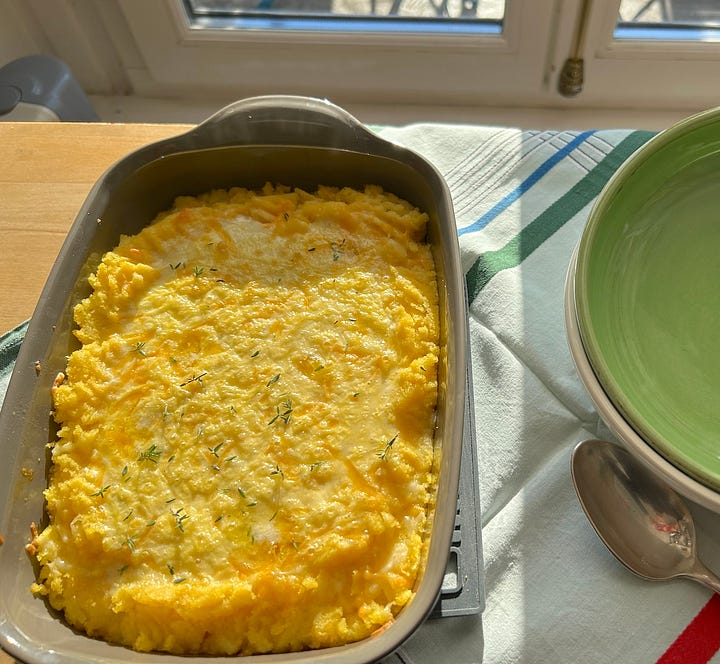
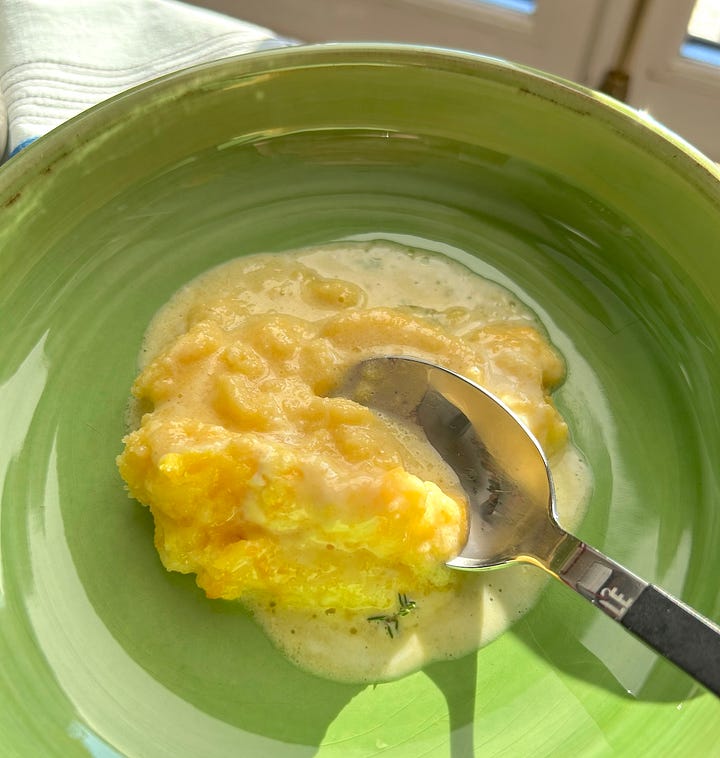
The cornmeal: Irina says to choose the cornmeal “where you can see its golden, finely crushed kernels and not the variety that looks like a pale yellow powder. Sometimes it’s called medium ground, other times finely ground, but whatever the name, choose by colour and texture. In many shops, cornmeal is labeled polenta.”
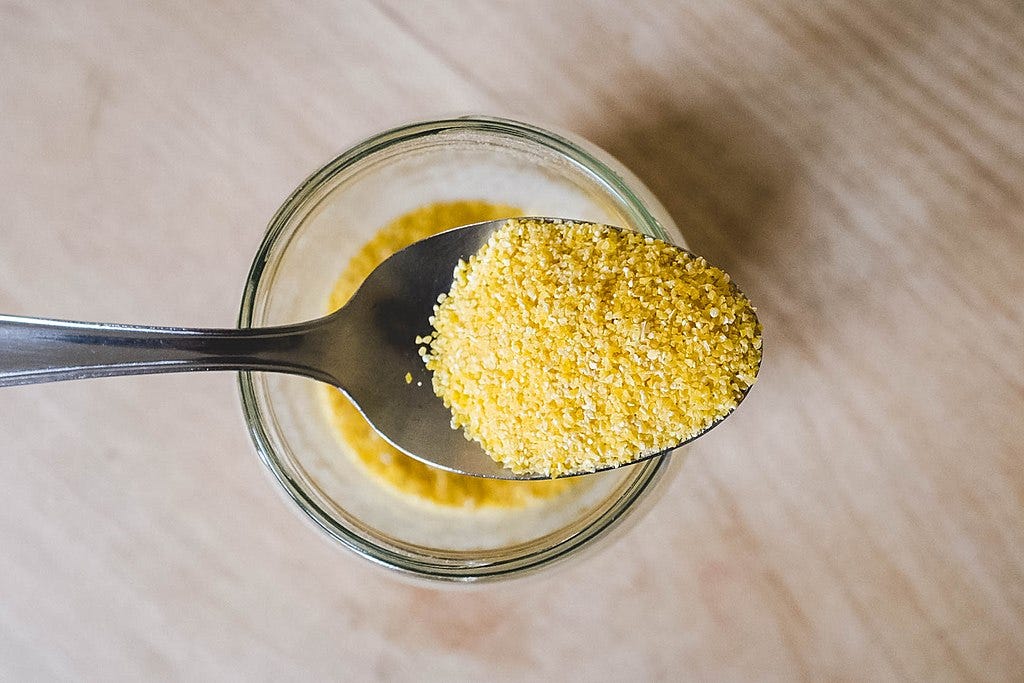
The water: My cornmeal cooked a little faster than Irina’s and needed a little more water. Different cornmeals cook differently. It was thick and that’s just the way it’s supposed to be.
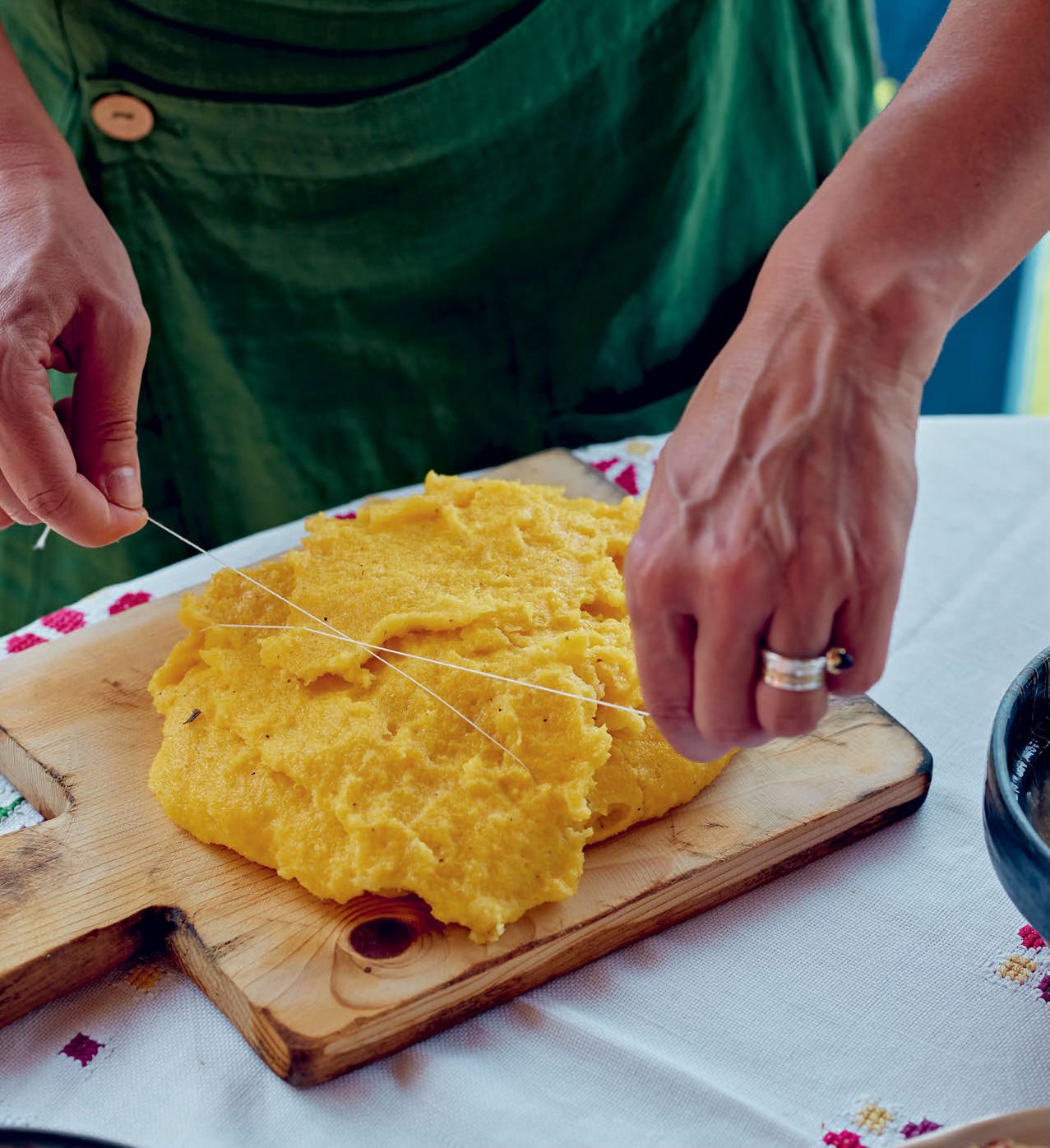
The eggs: American large eggs will work for Irina’s UK mediums.
Makes 2 to 4 servings
INGREDIENTS
500 ml (17 fl oz; 2 cups) water (see above)
1 teaspoons salt, plus an extra pinch for baking
150 grams (5 oz; 1 cup) fine cornmeal/polenta (see above)
45 grams (1 3/4 oz) butter (salted or not), plus extra for dotting
75 grams (2 1/2 oz) cașcaval or Cheddar, grated, plus extra for baking
200 grams (7 oz; generous 3/4 cup) sour cream (see above)
2 medium eggs, beaten
1 teaspoon chopped fresh thyme
DIRECTIONS
Preheat the oven to 180°C fan (350°F/gas 4/ 375°F in a conventional oven) or the grill (broiler) to maximum temperature.
In a deep pan, bring the measured water and salt to the boil. Add the cornmeal and use a whisk to distribute it evenly in the water. Reduce the heat to low, cover and allow the cornmeal to absorb the liquid for 8–10 minutes. [ed: Check it after 4 to 5 minutes - see above.] Whisk a couple of times throughout this process.
Stir in the butter and cheese, then pour the cornmeal into a 23 cm (9 in) ceramic baking dish. [ed: I only had a rectangular pan.] Allow it to cool a little, then make a large well in the middle. Add the sour cream, sprinkle with a pinch of salt, then add the beaten eggs, working them a little with a fork into the sour cream. Place a few dots of butter on top and another sprinkle of grated cheese.
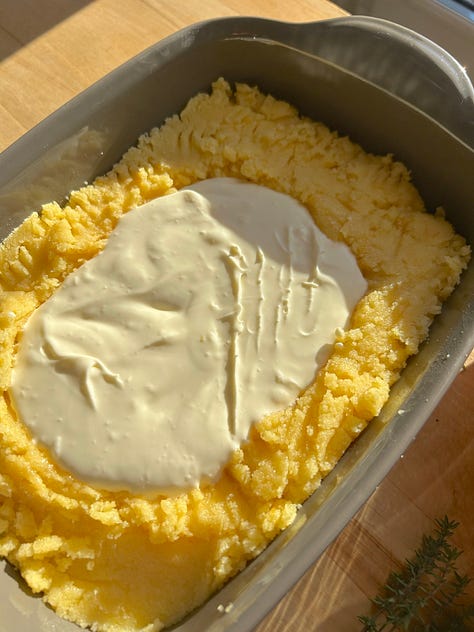
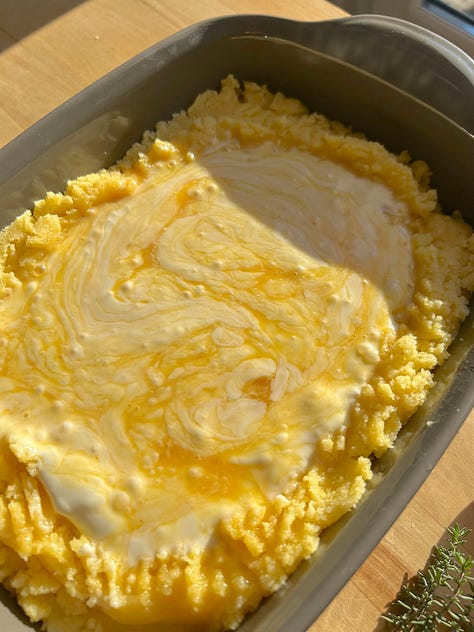
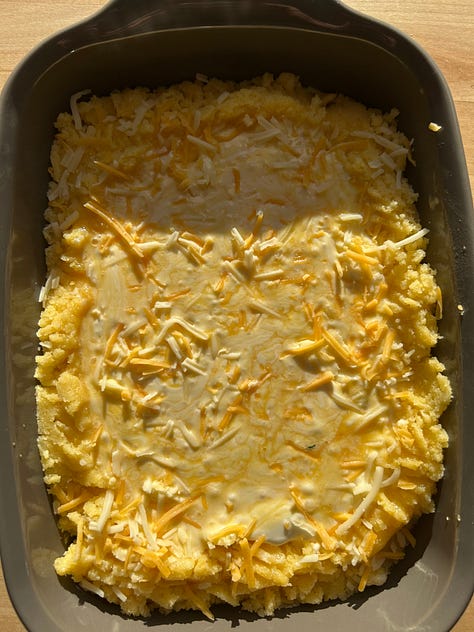
Bake or grill (broil) for 10 minutes, or until the eggs are just set and the cornmeal has a beautiful golden crust.
Sprinkle the thyme on top and serve hot.
PǍTURATǍ PE CRUMPI
Potato Stew with Cheese Filo Crust
Adapted from Danube: Recipes and Stories from Eastern Europe by Irina Georgescu | Get at Bookshop.org, Barnes & Noble or or Amazon
This is what Irina says:
This magnificent dish from Banat combines our Balkan spirit with our traditional Swabian cuisine. Păturată means ‘blanket’, in this case made of filo, and crumpi means ‘potatoes’. Initially, it was a dish of poverty when the pastry was used to cover the pot and keep the potatoes cooking in their own steam. It has evolved with the wealth of the households and turned into a cheese-filled strudel, swirled to the size of the pan and placed on top of the potatoes. Covered with a lid, the pan was put in the oven.
My recipe is an easier version, a little fiddly to start with but rewarding. Most importantly, anyone can make it at home. The real deal is to be found at traditional guesthouses and the Păturată festivals in the area.


